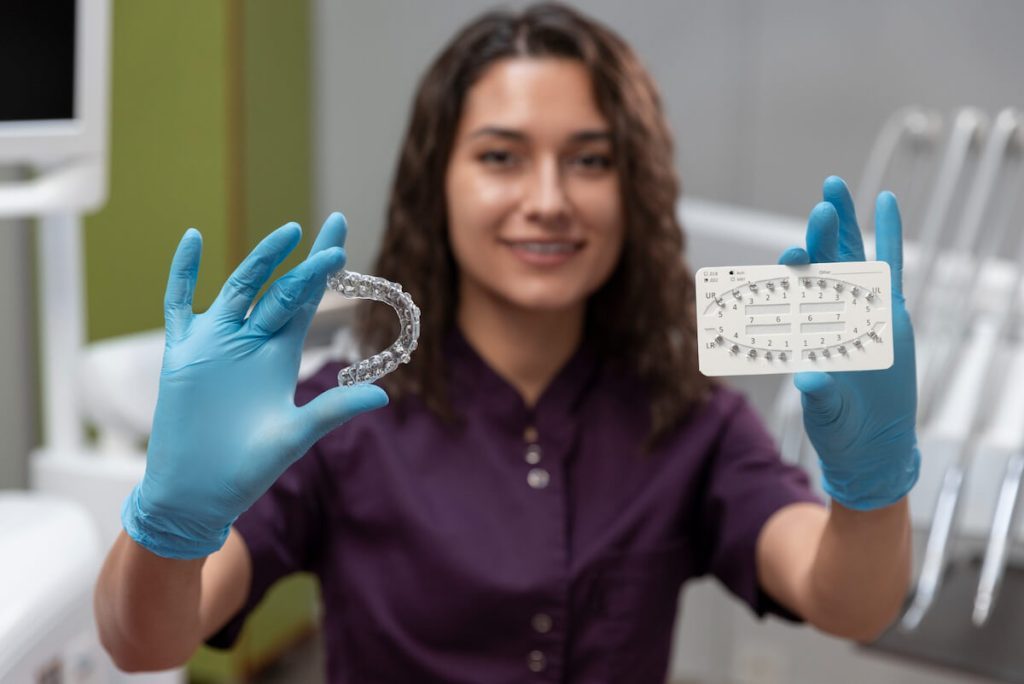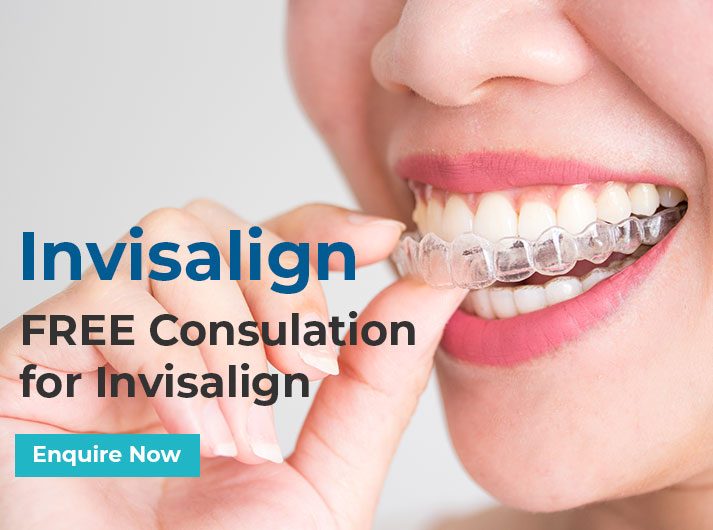Invisalign vs Braces – Understanding their Several Advantages

If you are considering treatment for straightening your teeth, Invisalign vs braces is one of the options you may have to address. Both have pros and cons, but Invisalign has clear benefits over traditional braces.
However, before deciding between Invisalign and braces, speak to a dentist about the suitability of your preferred treatment.
How does Invisalign work?
Invisalign treatment uses a succession of custom-made removable clear plastic aligners. Given to you in batches that last 6-8 weeks, the aligners are worn over the teeth—rather like a mouthguard. You need to wear them for around 22 hours a day.
Each aligner moves the teeth in tiny increments until they achieve their desired position. After 1-2 weeks of wear, you change the aligner for the next one in the batch. Visits to the dentist are every 6-8 weeks.
How do traditional braces work?
Braces are widely known to be effective in correcting complicated orthodontic problems despite technological advancements.
These comprise metallic bands bonded to the outer face of your teeth and metallic and elastic bands that exert force for tooth movement.
Some patients now prefer clear or tooth-shaded ceramic brackets or even lingual brackets bonded to the back of the teeth.
On the other hand, traditional braces need adjustment at least once a month at the dentist’s office. These adjustments are essential to guarantee that the teeth keep moving to the correct positions as required.
Invisalign vs braces – Which is better?
In the braces vs Invisalign debate, the advantages of the latter are:
Invisalign looks better
The most attractive aspect of Invisalign is that it cannot easily be seen.
This is great for adults and other professionals who have conditions that make them uncomfortable wearing regular braces.
The advantages of Invisalign aligners include wearing satisfactory orthodontic treatment that does not attract attention towards the fact that you are wearing aligners.
Notably, this subtlety can play a role in social and work-related spaces.
Invisalign aligners are removable
While traditional braces are fixed in place, Invisalign aligners can be removed when necessary.
Although you are recommended to wear them for 20-22 hours a day, you can take them off for a meal, so you do not have to deny yourself food.
While wearing metal brackets, some foods, such as corn on the cob, ribs, or popcorn, are challenging to eat because they tend to stick to the brackets or even harm them.
In addition to those who engage in contact sports, Invisalign offers a significant advantage.
You can remove the aligners until you put on a mouthguard; we provide more flexibility.
It’s easier to clean your teeth with removable aligners
Unlike regular braces, Invisalign is easy to use to maintain dental hygiene, as the aligners can be removed.
Another advantage is that you need no dental braces to interfere with brushing and flossing your teeth as usual.
Nevertheless, it can be a problem if a child or an adult has braces on their teeth. Orthodontic floss and a toothbrush require a lot of time and may not even work well.
Aligners are more comfortable to wear
While using both Invisalign and braces, your teeth will shift, and you will feel a lot of pain. Still, Invisalign aligners are often assumed to be more comfortable for patients.
Orthodontic appliances like braces cause soreness of the oral soft tissues, lips, and cheeks, which may result in sores or rashes.
Invisalign aligners are smooth and plastic, meaning patients will not encounter these problems.
While you might still feel tenderness from the pressure on your teeth, you won’t get the more recurrent irritation from metal brackets.
Invisalign requires fewer visits to the dentist
Compared with braces, Invisalign usually requires fewer check-ups and reviews with the dentist. This means you do not have to make frequent adjustments like traditional braces, created beforehand and worn in sets.
Overall, their frequency is less than that required for traditional braces, although you will have to visit your Leichhardt dentist every 6-8 weeks for check-ups and to collect new aligners.
This can be very advantageous if one is very busy at work or has other obligations.
Additional Considerations
While Invisalign offers several advantages, traditional braces can be more effective for specific dental corrections. For example, braces might be better if you have severe overcrowding and need to rotate teeth or adjust their vertical height.
Conversely, if your dental needs are more moderate, Invisalign can be a convenient and discreet way to achieve your dream smile.
Moreover, Invisalign’s removable nature requires more responsibility and discipline.
Since the aligners need to be worn most of the day, you must be diligent about wearing them. Failure to do so could extend the length of your treatment or impact its effectiveness.
Invisalign vs Braces – The Bottom Line
Invisalign is an excellent option over traditional braces in many ways.
However, the decision must be made in consultation with your Leichhardt dentist, as the best treatment option will depend on your orthodontic problem.
Invisalign and Braces in Leichhardt
At My Local Dentists, we are a friendly and experienced team here to help.
For more information about Invisalign vs. braces, request a FREE consultation with one of our experienced dentists or call us at (02) 9171 0840 today.
We are located at Shop 48, Leichhardt Marketplace Shopping Centre, 122-138 Flood Street in Leichhardt.

